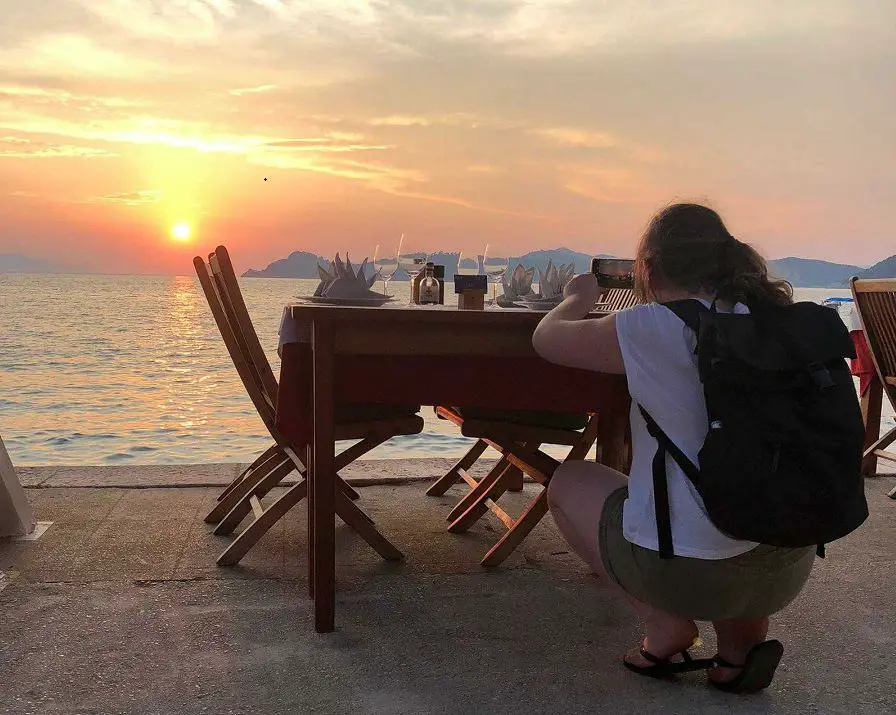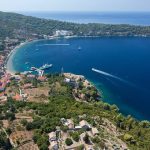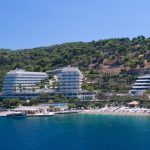Seeing things with a fresh pair of eyes is always instructive. Almost a year ago, at the conclusion of the Dubrovnik Nomads-in-Residence programme, A Dutch digital nomad gave an initial presentation to the mayor, tourist board, media and public on his group’s findings after 4 weeks as guests of the city. Their brief was to look at Dubrovnik through the eyes of digital nomads and to work with Dubrovnik to create an effective strategy for future development. His presentation was simple, concise, in many ways obvious, and made the whole room pause to think.
His first slide showed the first 30 images on Google Images of Dubrovnik, and they all showed the same thing – the stunning UNESCO World Heritage Site that is the old town of Dubrovnik. One nomad commented that prior to coming to the city, he was not even sure if Dubrovnik had anything of interest or substance beyond the walls. The perception that Dubrovnik was a 2-3 day destination is one that changed during his stay of four weeks, and he announced that after almost a month, he was still not ready to go home.
The magic of Dubrovnik for all these nomads was not the gorgeous old town, stunning as it undoubtedly was, but what lay beyond the walls – the rest of living, breathing Dubrovnik and its surrounding area. In some ways, it was an obvious point, but taking the focus away from the old town seems somehow innovative. And having thought about it, the perception of the reality of Dubrovnik as a destination can only change if we show Dubrovnik, the reality, rather than Dubrovnik, the Instagram poster child.
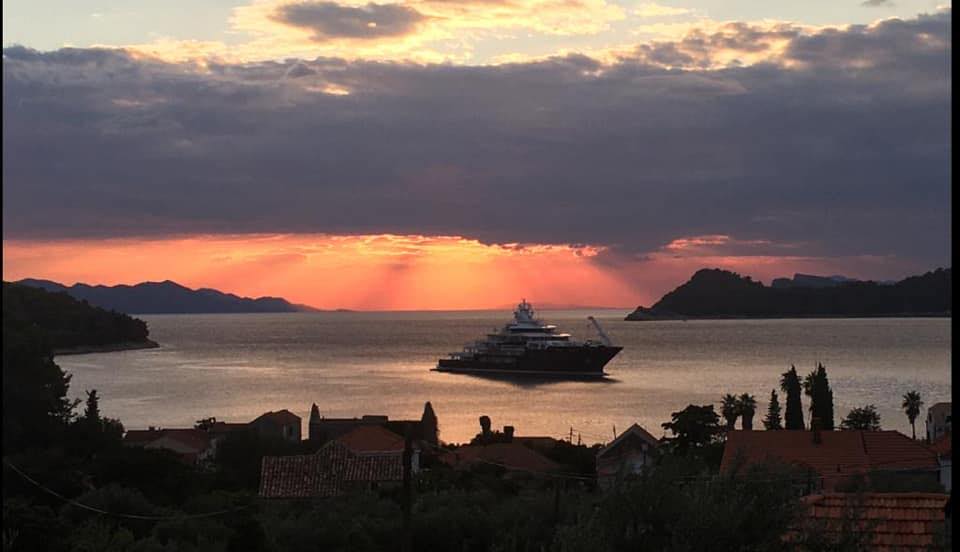
Welcome to Dubrovnik Beyond the Walls, a new TCN series showcasing the magic of this incredible city, but away from its photogenic famous old town. There you can take in centuries of history, culture and tradition, but if you take a bus, boat, or short walk, there are many other Dubrovnik experiences to be enjoyed which complement the famous main attraction. After our first feature article on the Island of Kolocep, also known locally as Kalamota, it is time to swim a little further to the second car-free of the Elaphite Islands, gorgeous Lopud.
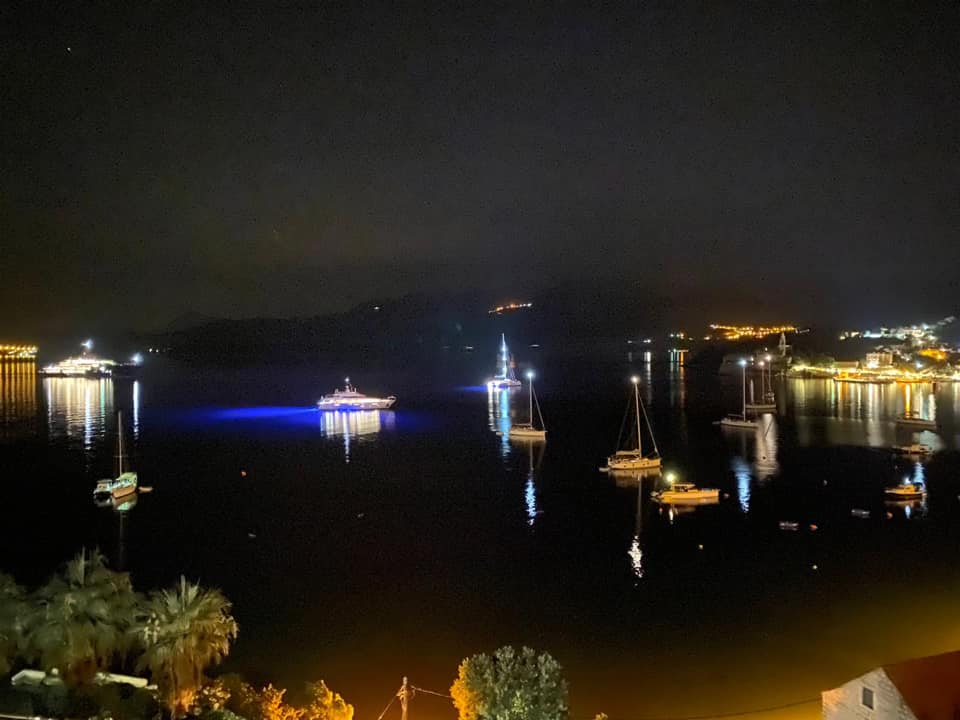
One of the few constants in my Facebook feed during the summer is an almost daily dose of the magical sunsets of Lopud. A friend of mine has roots on the island, and it seems he never tires of the beauty of what he sees before him every evening. I felt that I knew the island’s views long before he invited me to visit a couple of summers ago.
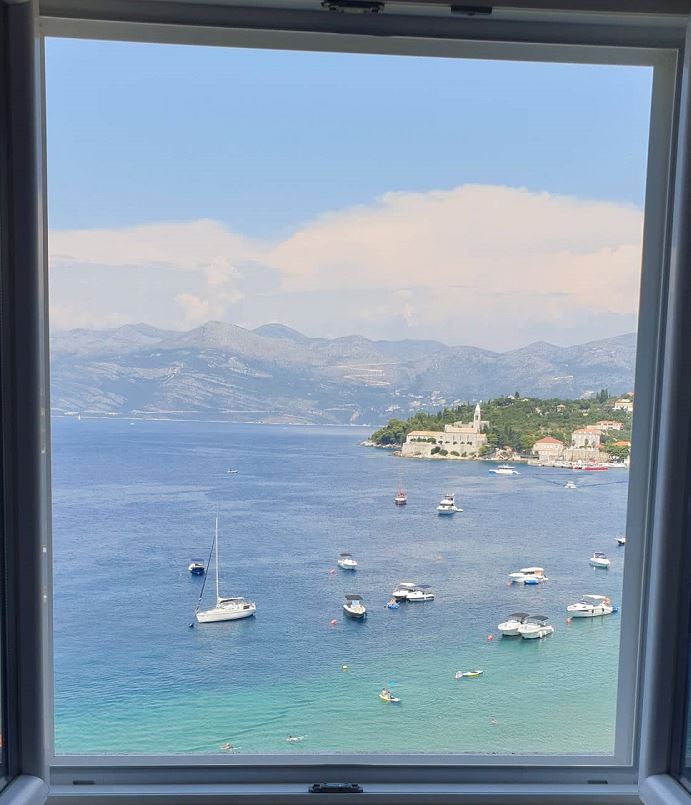
And it did not take me long to fall in love with yet another exceptional Dalmatian island, or to discover that the sunset views were just part of the magic. How about this for a bedroom room with a view, for example? No wonder he was spending less time in Zagreb…
There is an excellent and regular ferry service from Gruz harbour in Dubrovnik, which takes passengers to all three of the Elaphiti islands, stopping firstly on Kolocep, before arriving in Lopud just under an hour after departure. While most of the life on the island is concentrated in the village and riva close to the ferry, sun worshippers in search of a sandy beach make the journey and then hike to the other side of the island for a rare treasure – a high-quality sandy Dalmatian beach.
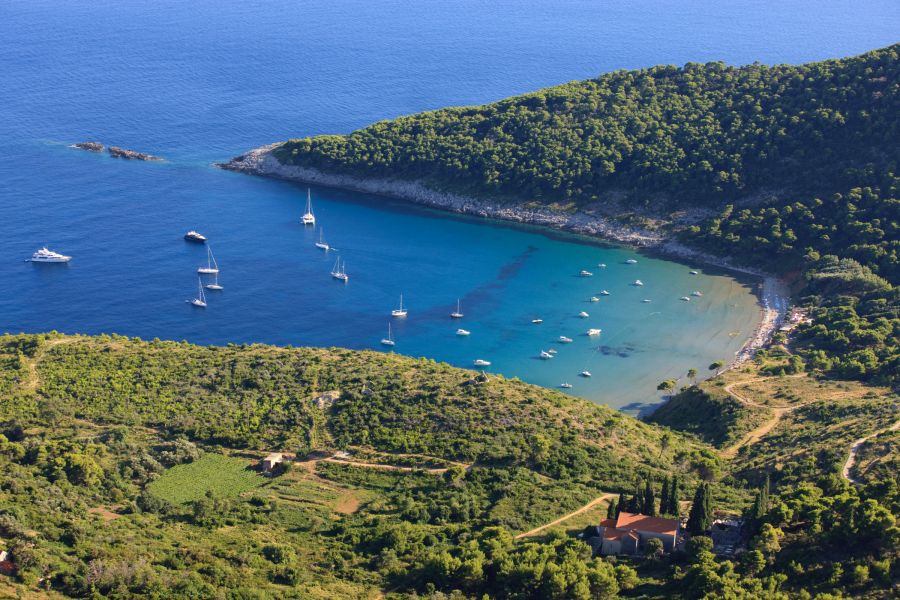
There are quite a few popular beaches in the Dubrovnik area. Some are popular with locals, some with tourists, but none is universally as loved as Sunj Beach. Sunj is located on the south-eastern end of the Island, facing Dubrovnik. Notably, it is Elaphiti’s most popular port of call for private and chartered boats. You can get to it on foot from Lopud village by following one of the marked footpaths through the woods. It bears the name of Czech writer and politician Viktor Dyk who was in love with Lopud. The path also features a monument built in his honour in 1936. Sunj Beach has some beach amenities available like a bar, restaurant and lounge chairs. It is indeed the most spacious sandy beach of Elaphiti and it will remain everybody’s favourite for quite some time.
For the buzz of daily life, however, simply step off the ferry and into the relaxed bustle of traditional Dalmatian island life, where the pace of life is slow and chilled. The riva appeared to me almost like a living room, with some residents actually bringing out chairs in front of the house to soak up daily life.
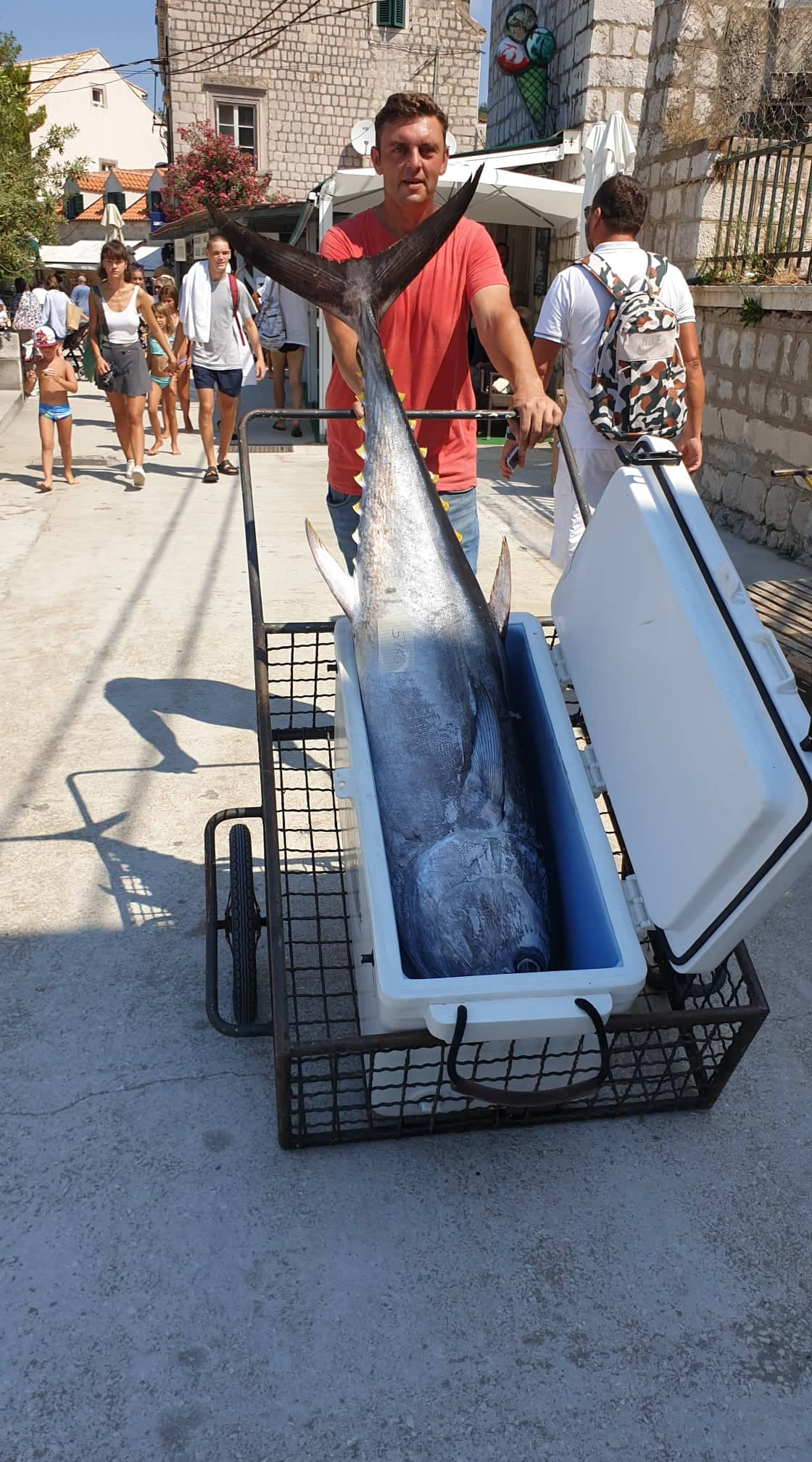
It did not take long on Lopud to work up an appetite. If you are into your seafood, just grab a coffee at a cafe on the riva and watch the catch of the day pass by.
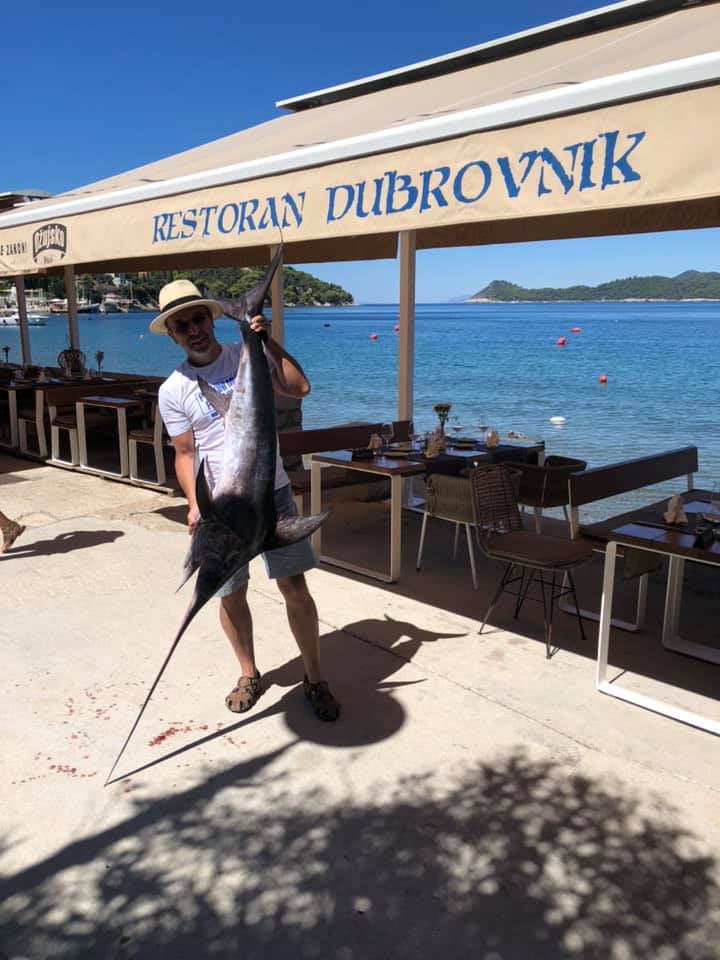
Or check with the local restaurants what they have on offer for the catch of the day. There was something about the riva on Lopud that really appealed to me – something for everyone, including a family-friendly beach, local honey and fig selling their wares, full-time locals greeting Zagreb-based ‘part-time islanders’ with island banter. Relaxed, jovial, welcoming, safe.
But Lopud also has some rather remarkable and unique treasures to boast, some of them really rather unusual.
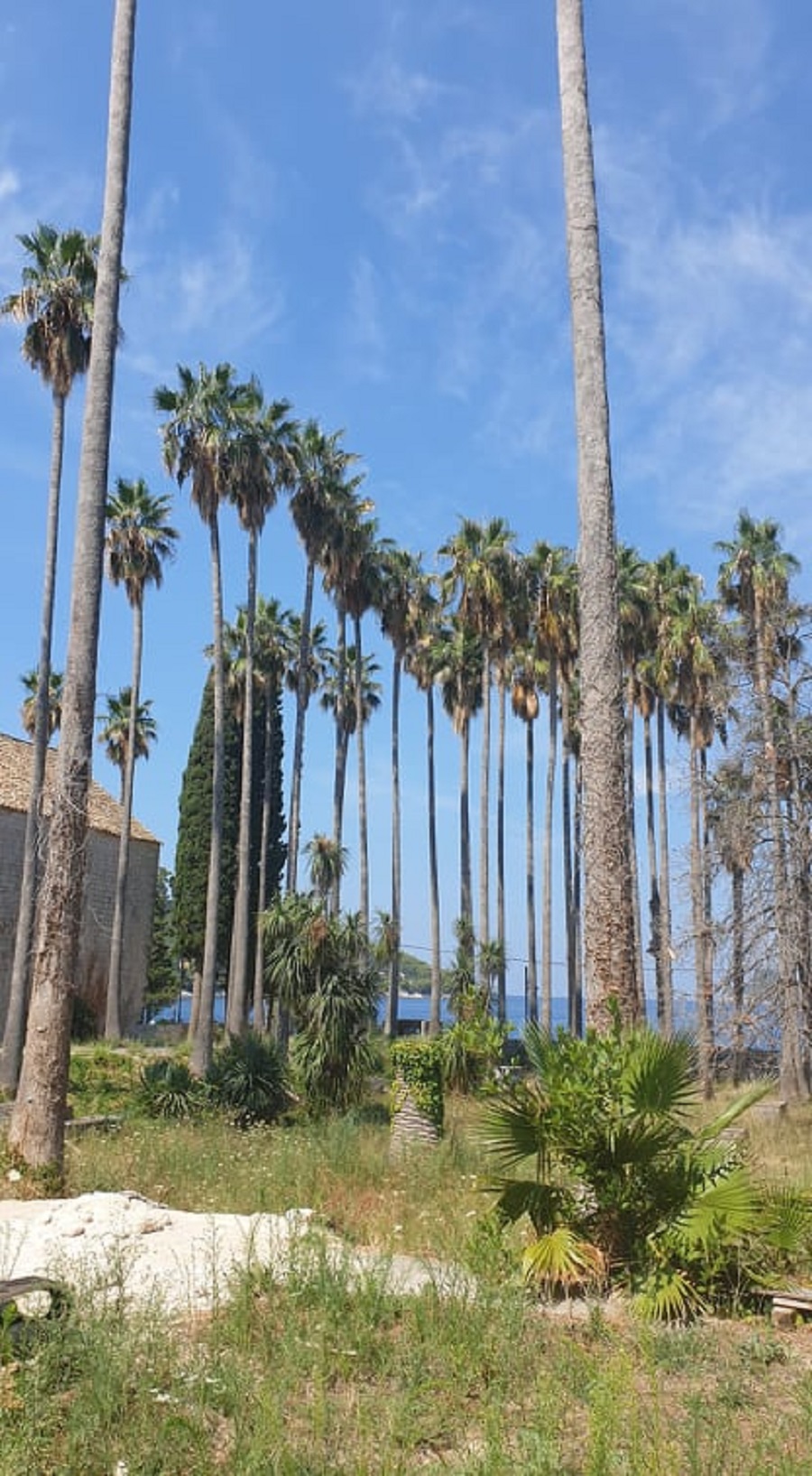
Did you know, for example, that the island of Lopud is home to the tallest palm trees in Europe?
And behind these majestic palm trees, which adorn the Lopud waterfront, is something really quite unusual and unexpected – the world’s first concrete hotel, built back in 1936!
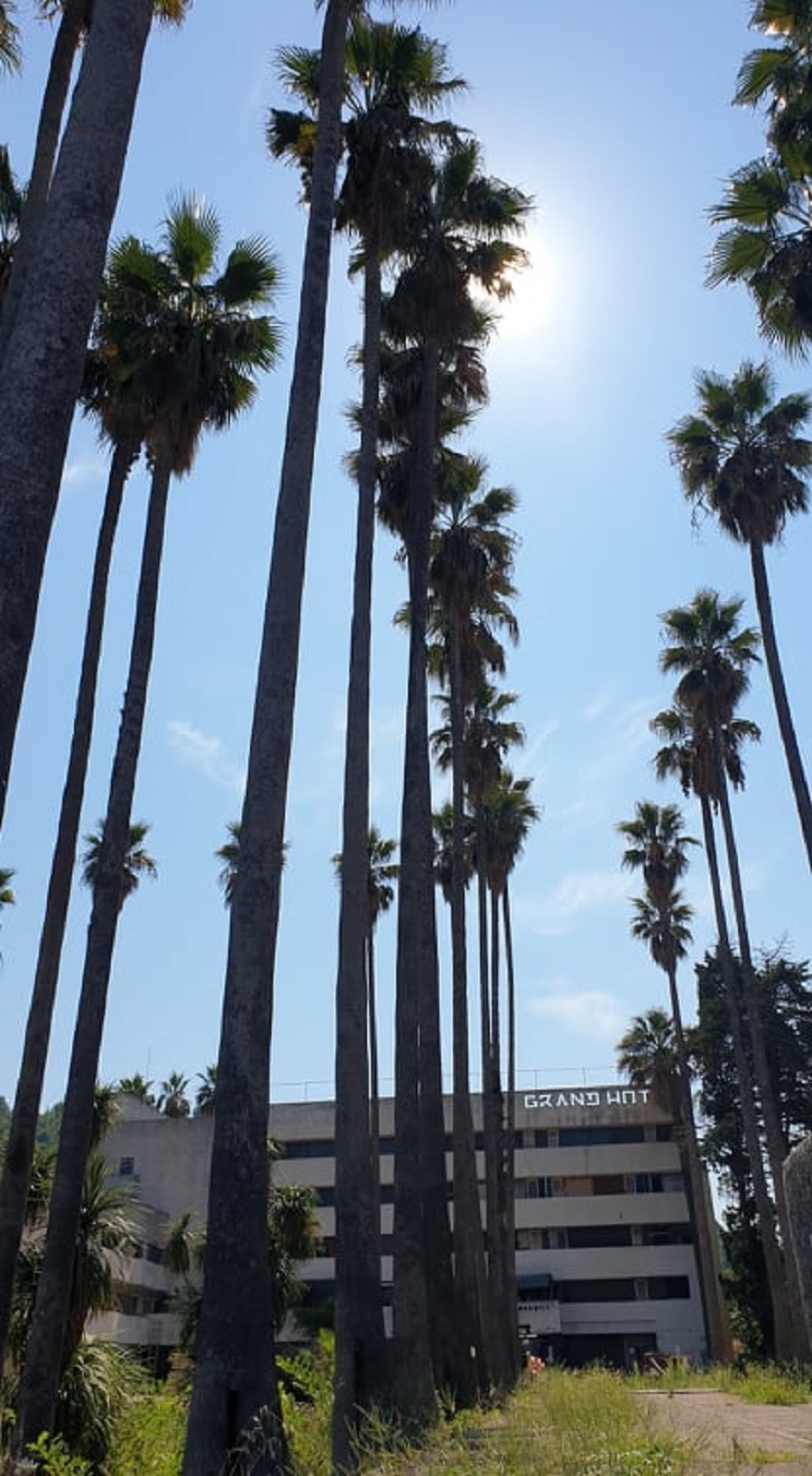
The hotel was opened by Czech owners just 3 years before the opening of the Second World War and is a major example of the bold architecture of Nikola Dobrovic, whose reinforced concrete hotel was his crowning work. It was designed in the shape of a ship from above, complete with a tennis court on the roof, and it looked out to the Adriatic through those impressively tall palm trees, as well as ubiquitous bitter orange trees, for which Dubrovnik is famous.
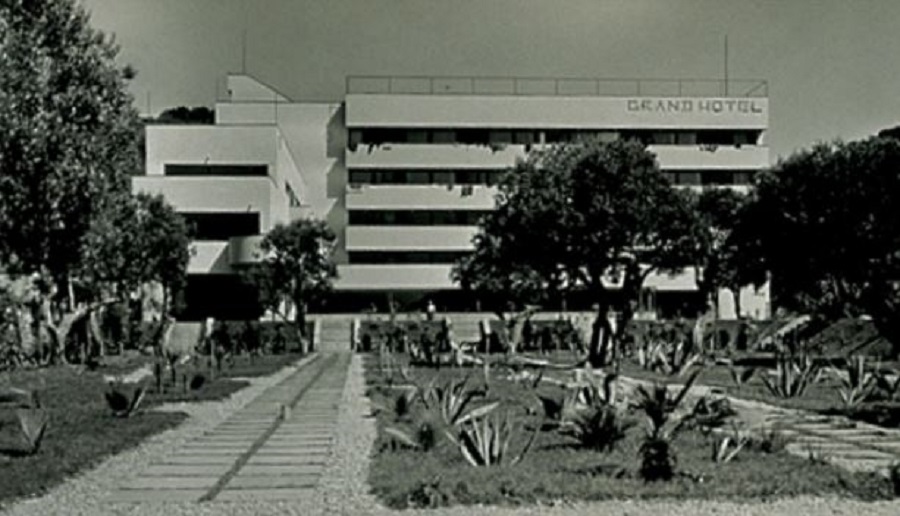
Then came the Second World War, an end to tourism temporarily and a new use for the young concrete hotel – an internment camp for the Jews of the Dubrovnik region. Some 600-700 were interned there. The glory days of this unique concrete hotel were undoubtedly the 1980s before the Homeland War. Life in former Yugoslavia was cheap, life was very liberal, and tourists came to visit knowing they would have a wonderful sun-soaked relaxing vacation at an affordable price.
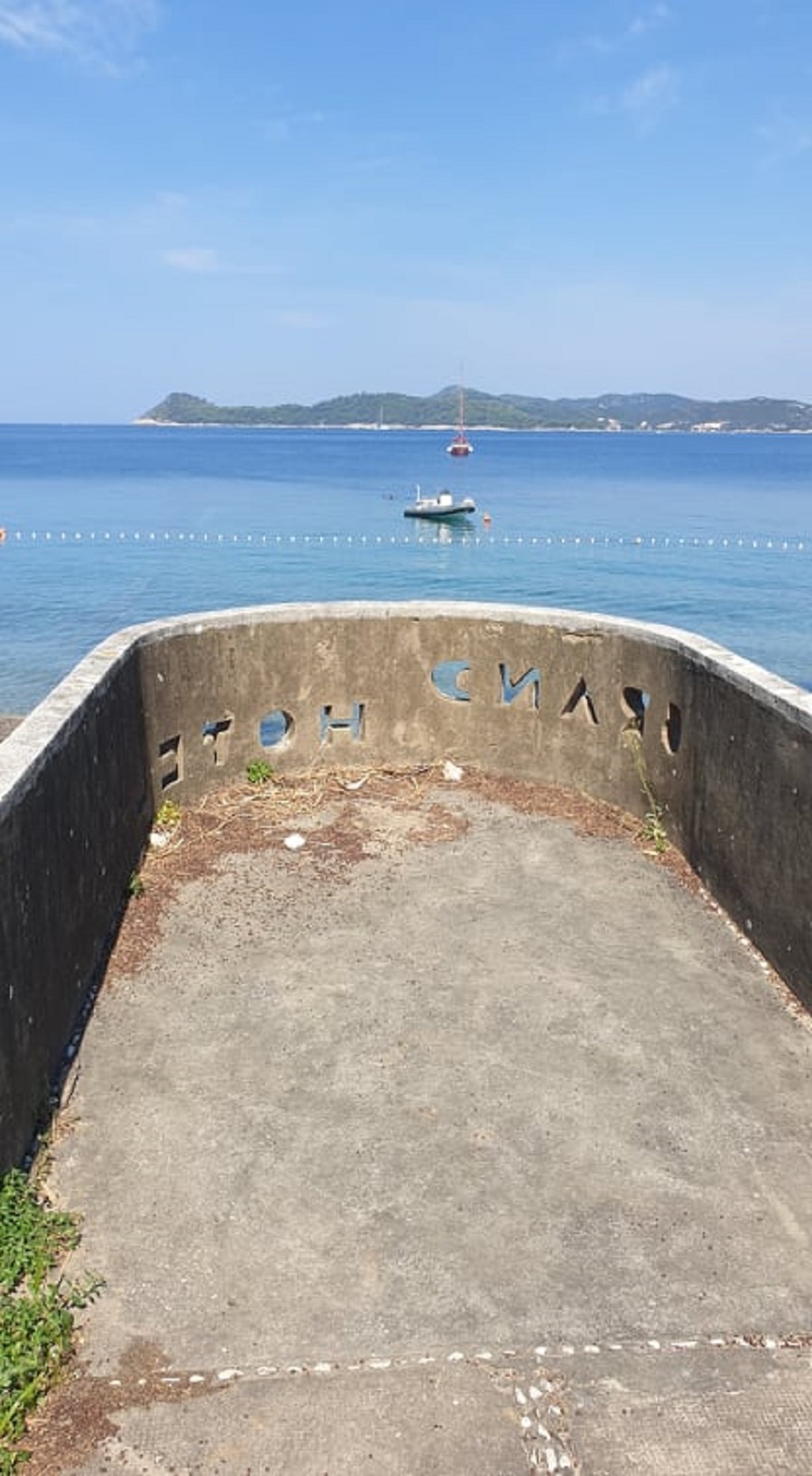
Plans are in place to renovate the famous concrete hotel, reducing the number of original rooms to provide more spacious accommodation for modern needs. And while we wait, those tall palm trees will continue to sway gently in the evening breeze, as they observe yet one more of some of the best sunsets in Europe.
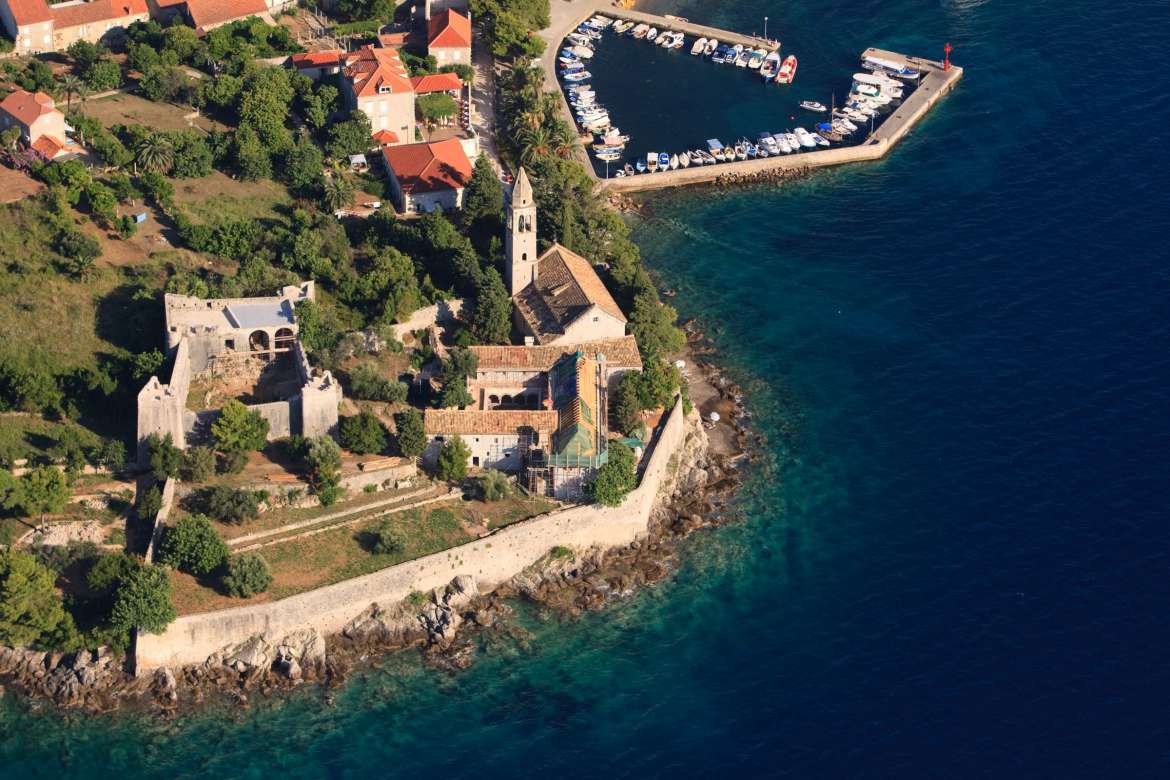
And while Lopud might have set the pace in 1936 in the world of concrete hotels, today it is leading the way with luxury boutique hotel tourism. Located on the northern peninsula, LOPUD 1483 is a restored Franciscan monastery that has been overlooking the Elaphiti Islands and Croatia’s Dalmatian coast for centuries. After an extensive and sympathetic restoration by renowned art visionary, Francesca Thyssen-Bornemisza, LOPUD 1483 has opened its doors to guests and this five-suite, 15th-century monastery is available to rent exclusively for private stays and events. It is one of THE places to stay on the Adriatic.
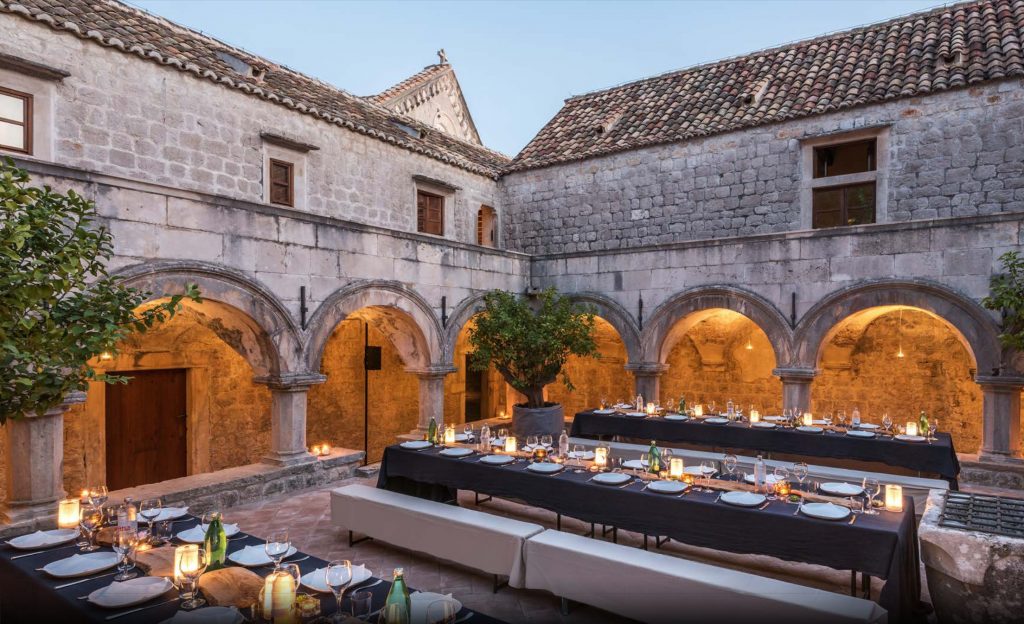
For those on more of a budget, there are two more hotel options, both in Lopud village. They are both close to the sea but are vastly different in their design and feel. Hotel Glavovic is a 3-star property and is a recently revived historical hotel originally opened in 1927. On the other hand, 4-star Lafodia Sea Resort is quite a different story. It is a big, modern, and stylishly designed property featuring plenty of amenities and amazing sea views. The island of Lopud also has an excellent range of luxury private villas, many of them with pools.
The majority of Lopud Island’s dining spots are in Lopud Village with some dining options also on Sunj Beach. You will find great choices in the historical Lopud with restaurants Dubrovnik and Obala worthy of a special mention. Hotel Lafodia is also a place where you can find great cuisine. Their La Baja Bar & Grill is a cool option for enjoying a bite to eat or a refreshing drink next to the beach. This restaurant is known for featuring live entertainment in the evenings as well. Many of Lopud restaurants have terraces with amazing views over the bay and will not let you forget what a gorgeous place you are spending your vacation.
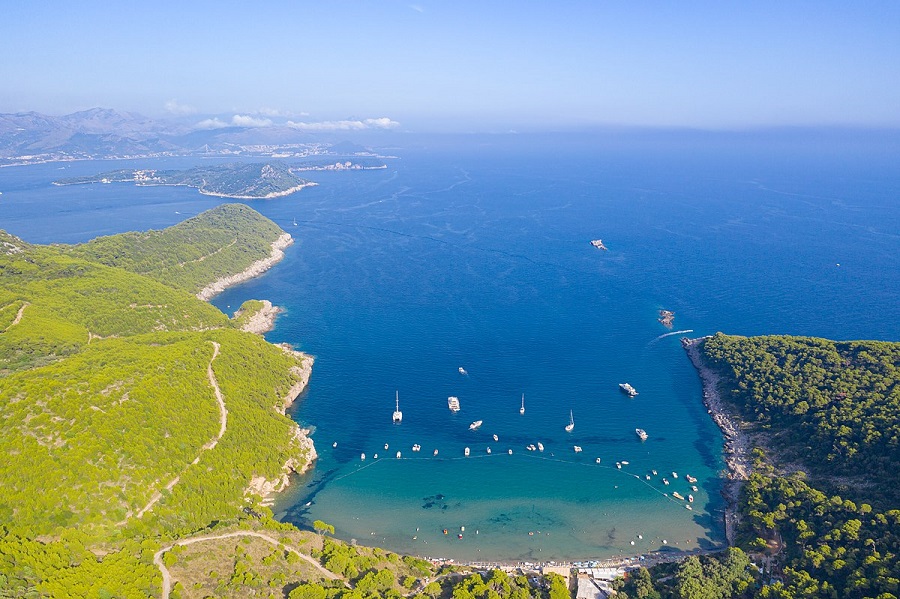
A quite magnificent island, and one which is less than an hour by regular ferry from Dubrovnik. The pace of life on the island of Lopud could not be more different from historic Dubrovnik.
Dubrovnik beyond the walls, a new way to look at the Pearl of the Adriatic. And with so many different options available, tailor your Dubrovnik experience to your specific needs.
To learn more about the Beyond the Dubrovnik Walls series, follow the dedicated section.

